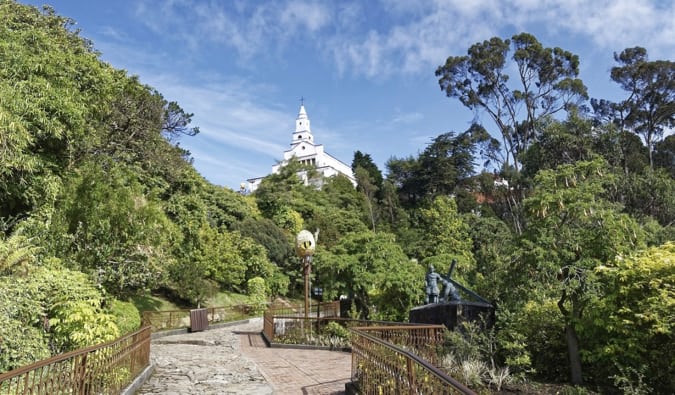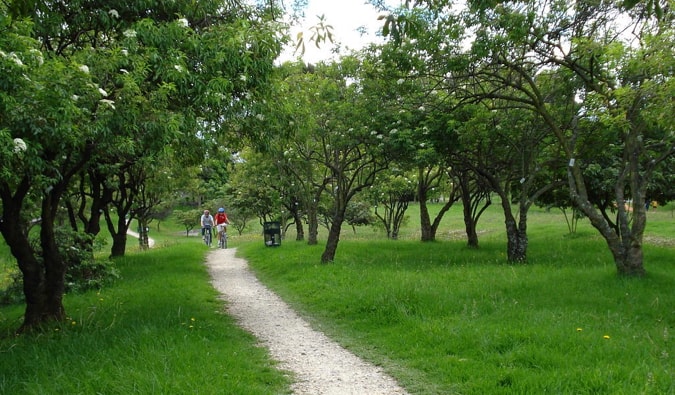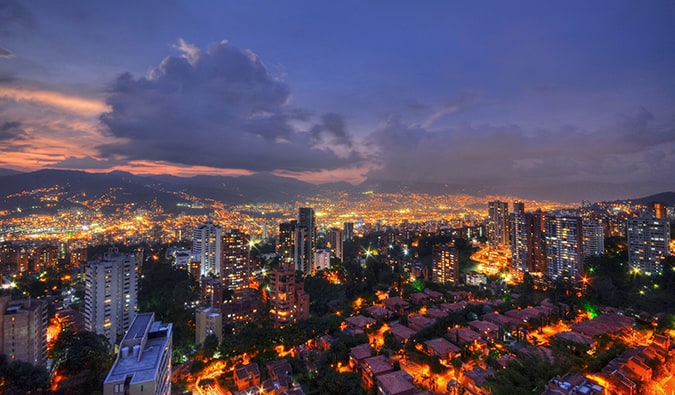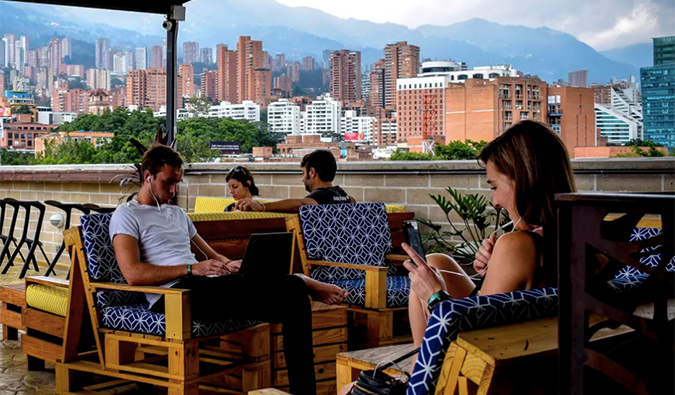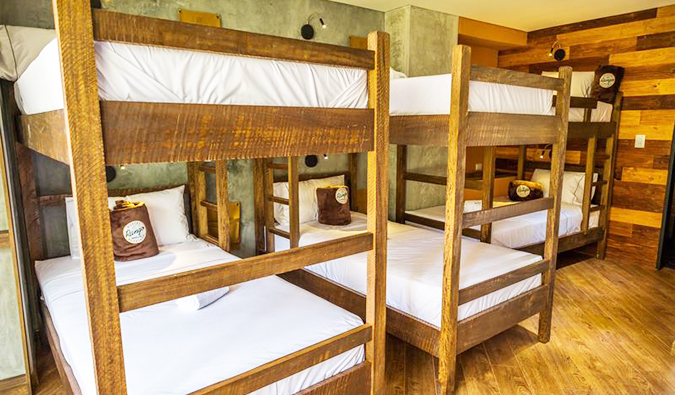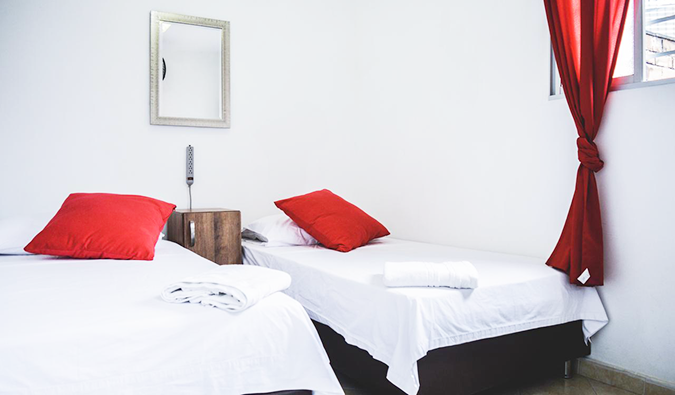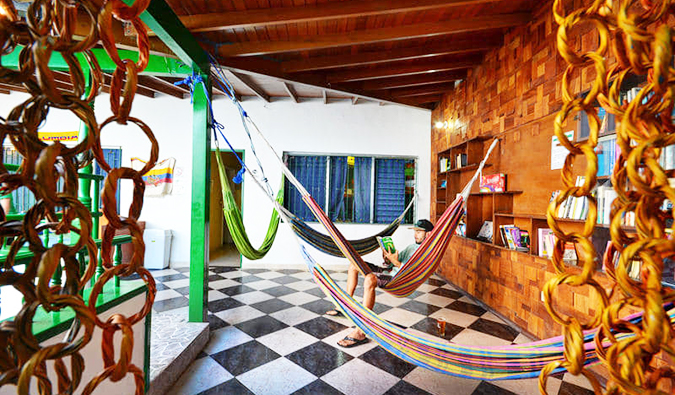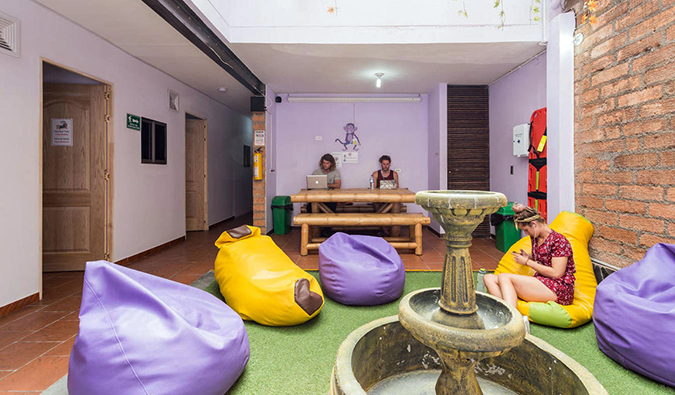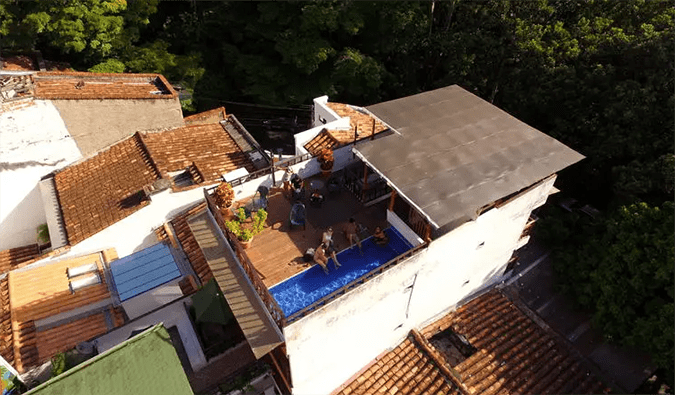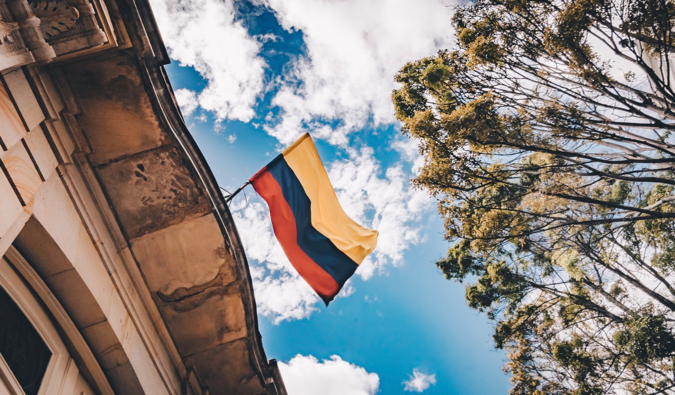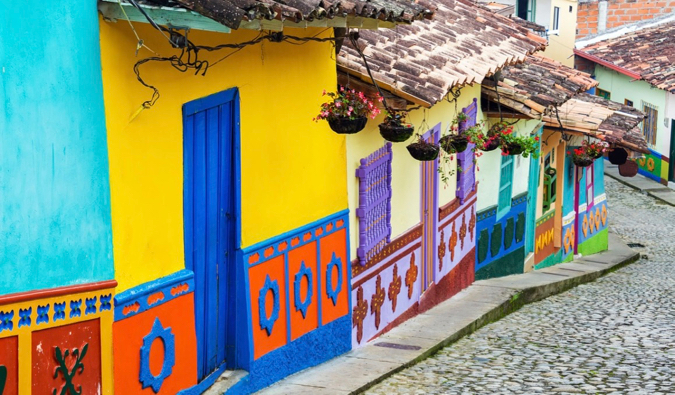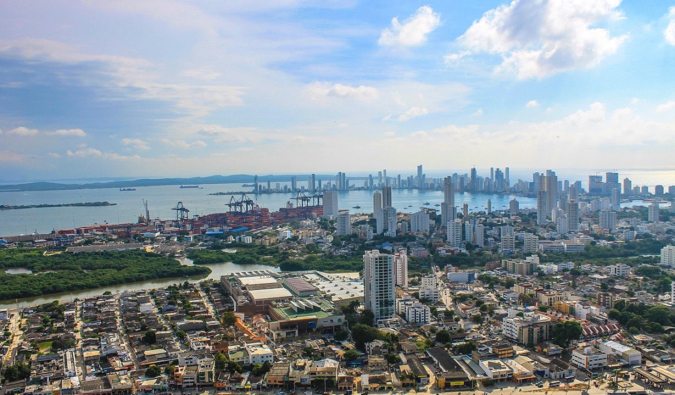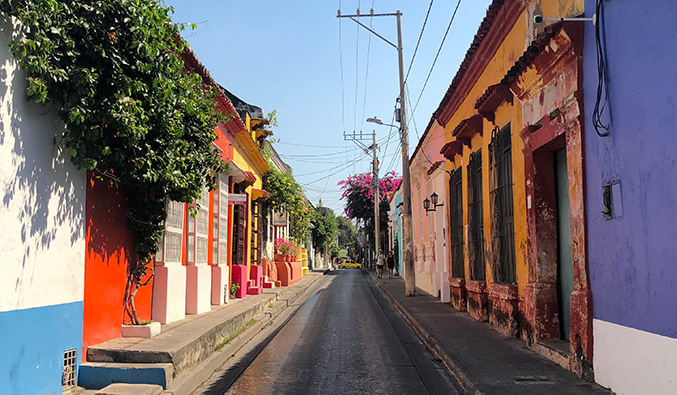
Posted: 4/18/2019 | April 18th, 2019
From the blue waters of Tayrona National Park, the sweeping views of the Cocora Valley, and the ruins of San Agustín, Tierradentro, and the Lost City, to the white colonial buildings of Popayán and the hustle and bustle of its metropolises, Colombia is packed with things to see and do.
I’d wanted to visit Colombia for years. And after spending six weeks there, I must say, it lived up to the hype.
I mean I’ve been fawning over it a lot in my last few posts. And I know I’m the millionth blogger to do so, but it really is as incredible as people say. (Even getting knifed there couldn’t stop me from loving the country.)
I had falsely assumed that six weeks would be enough to get a good sense of Colombia. After all, six weeks is a fair amount of time to spend anywhere.
But I was wrong. Given its size and the sheer number of activities, it was barely enough to scratch the surface.
Yet I did manage to see a lot.
Today I want to share my list of what I think are the best things to see and do in Colombia. These are the activities and places you should try to focus on when you visit:
1. Cartagena
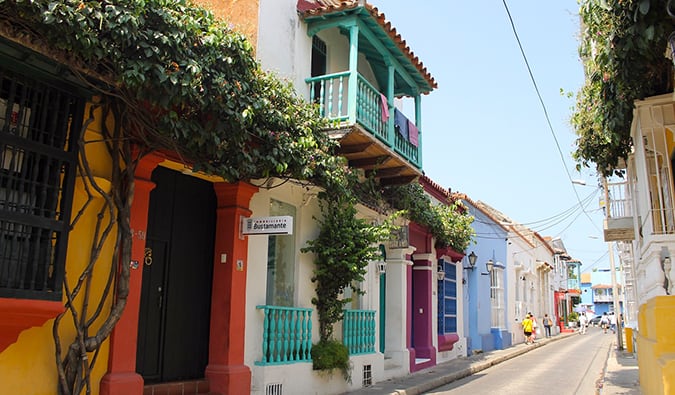
Cartagena is one of the most visited destinations in Colombia (thanks to a lot of direct flights and cruise ship visits). Dating back to 1533, the city is famed for its colonial Old Town: a maze of cobbled alleys, flower-covered balconies, and giant churches on spacious plazas.
But despite the crowds (and there are a lot of crowds), I really enjoyed Cartagena. While there aren’t a lot of tourist activities (you can do most of them in a single day), what makes it a wonderful place to visit is just that: it’s somewhere you can slow down, relax, and gorge on the phenomenal gastronomy.
For more, check out this blog post about Cartegena and all my favorite places to eat there.
2. Tayrona National Park

Located on Colombia’s Caribbean coast, Tayrona has long stretches of golden beaches lined with coconut palms and a dense rainforest with lots of easy day hikes. You’ll also find campsites for overnight stays, hammocks for rent, restaurants, diving, and horse riding.
It’s easy to visit as a day trip from Santa Marta. I highly suggest you start early at the big entrance at El Zaino and exit the park through Calabazo. This underused route takes a whole day, and once you pass the Cabo San Juan campground, you’ll get the last half of the trail to yourself. Try to avoid visiting during January and weekends, when the crowds on the beaches and hiking paths are at their peak.
3. The Lost City (La Ciudad Perdida)

The Lost City was built around 800 CE and contains 169 terraces carved into the mountains, as well as a network of tiled roads and small plazas. It’s one of the most beautiful treks in the country, and the site is older than Machu Picchu! To visit, you need to hire a tour operator (you can’t do it by yourself). It’s about $300-350 USD for the trek from Santa Marta through the jungle up to these beautiful ruins and takes 4–6 days. If you’re pressed for time, you can also do it in three days; the only difference is the pace you go at.
(Tip: You cross a lot of rivers, so be sure to bring an extra pair of shoes or flip flops for when you cross the rivers. You’ll easily ruin a pair of sneakers along the way.)
4. Salento

Surrounded by green mountains and coffee farms, this is one of the oldest towns in the coffee-growing region and the most popular for travelers. The houses are painted a variety of vibrant colors, and the high vantage points throughout town provide some stunning views (sunsets are quite magical). There’s not much to do in the city itself — it’s simply a base for coffee tours or hiking the Cocora Valley (see below) or the trails around town — so it’s easy to spend a few days here watching the world go by with a good book in hand.
5. Cocora Valley

The Cocora Valley is home to Colombia’s national tree, the wax palm, which grows to nearly 200 feet tall. This area has probably the most popular day hike in the country (which was also my favorite activity during my entire trip). You’ll cross jungle rivers, visit a bird sanctuary, and enjoy some stellar views and forest scenery. The route’s about five hours, and you can choose to either take the clockwise or counterclockwise route. The clockwise route, starting at the Wax Palm Valley, is easier, with fewer hills. Counterclockwise is easier at the end, though a little anticlimactic, as you end the hike walking down a boring road.
(Tip: Start early to avoid the brutal midday heat, since there are a lot of exposed areas here.)
6. Bogotá

Bogotá is Colombia’s vibrant capital. While it’s not the country’s most popular destination, it felt the most “Colombian” to me: there was just a certain edge and charm to it, and it seemed the least touristy, with the fewest gringo expats. The historic downtown, La Candelaria, is filled with bright colonial buildings, detailed museums, delicious restaurants, tiny fun bars, historic churches, and centuries-old houses. The north end of town is home to boutique hotels and entertainment areas like Zona Rosa and Zona G. The foodie scene in the city is incredible, with a lot of international options and cutting-edge gastronomic happenings. Throw in some amazing walking tours, day trips, and hikes and you’ve got a recipe for an astounding city.
For more, here’s a list of all my favorite things to do – and places to eat – in Bogota.
7. Cali
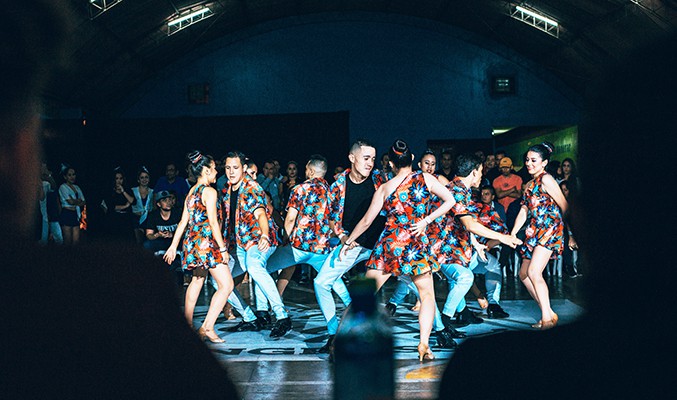
This hot, hot city is the salsa capital of the world, where people come to dance. A lot of the guests at my hostel had been there for weeks to learn (the hostels also offer free dance classes). If you like to dance, you can’t miss this city. Besides dancing, though, there are a number of parks, museums, and churches you can visit, plus free walking and food tours. While I didn’t stay long, I definitely enjoyed the scene.
8. Popayán

Popayán rivals Cartagena as Colombia’s most impressive colonial town. It’s known as La Ciudad Blanca (“The White City”) because all the buildings are painted white. Popayán is also a college town (there are three universities), and it’s produced 17 presidents too! Though small, I really loved the slow pace of life and the surprisingly robust food scene here (eat at La Cosecha Parrillada, Restaurante Italiano y Pizzeria, La Fresa, and Mora de Castilla).
While you don’t need a lot of time (take the walking tour, climb the hill, see the churches, and you’re done), I do suggest staying longer to enjoy the slow pace of life. So much of Colombia is go-go-go, it’s nice to find a place that’s more “stay and relax a while.”
9. Tatacoa Desert

Millions of years ago it was once a lush tropical forest. Now, Tatacoa Desert is filled with rocky canyons in shades of red and gray. It is also home to one of the most important observatories in South America, where you can gaze at the stars (weather permitting). If you want to be blown away by the universe, you really need to see this place! Other than that, there’s not much here. Bike into the desert, take some walks, stare at the sky. Stay a night or two. It’s not a popular area, but it is a picturesque way to break up the long bus ride from Bogotá to the south or vice versa.
10. San Agustín Archaeological Park

A UNESCO World Heritage Site, San Agustín is a small mountain town that’s home to hundreds of pre-Columbian statues and burial mounds. Its collection of religious monuments and megalithic sculptures is the largest in Latin America, for which you’ll need at least one full day (two to really see it all in depth). If you love history, this is probably the best spot in all of Colombia to experience it.
11. San Gil

San Gil is considered the outdoors capital of the country. Extreme-sports fans love it here. You can go white-water rafting, paragliding, caving, rappelling, trekking, and more from this city! This city is a great place to do outdoor activities and you’re going to find a lot of tour operators in the city. Try to plan at least three days here. It’s worth it.
12. Providencia and San Andrés Islands

These islands are actually closer to Nicaragua than Colombia. They are also considered some of the most unspoiled places in the Caribbean. You’ll find white-sand beaches, stunningly clear blue water, and few crowds (though, thanks to some recent press, Providencia is becoming a lot busier).
Try to make it when tens of thousands of black crabs migrate to the sea. This happens twice a year for about a 1-2-week period between April and July, so it’s not always easy to nail the timing.
13. Medellín

In a country full of hype, this hyped-up city is all that it’s cracked up to be. Set in the Aburrá Valley, Medellín is one of the fastest-growing cities in Colombia. It has enough activities and things to do to fill weeks on end: from microbreweries, museums, walking tours, spacious parks, street art, food tours and markets to incredible nightlife, and on and on and on.
It’s one of the most popular destinations for expats and tourists in the country. While it’s easy to get lost in Gringoland here, try to get out of Poblado or Laureles and see the locals’ side of town.
There’s more to the city than those two areas!
14. Guatapé

This pueblo is one of the most picturesque towns in Colombia and one of the most colorful in the world, as most of the traditional homes have murals painted on the bottom half of their façades that depict animals, people, and shapes. Just hanging out in one of the bright plazas, drinking coffee and people-watching, is one of the most pleasant things to do here.
Most people, though, come to climb the steep (and difficult) staircase to the top of the monolithic Rock of Guatapé (La Piedra) for some of the best views in the country. Guatapé is a long day trip from Medellín (hostels in the city organize them throughout the week) so I recommend trying to spend at least a night here so you aren’t as rushed and can enjoy the area little more.
15. Chingaza National Park

This is one of the biggest nature reserves in Colombia, home to more than 1,000 plant species and 187 bird species. Here you’ll learn about the Páramo ecosystem and how it affects the global water system. (Fun fact: Nearly 80% of Bogotá’s water supply comes from Chingaza.) If you’re going to hike, joining a tour is a good idea. The guides are usually naturalists who can explain the unique environment of the area. One of the best routes is the challenging hike to the summit of Lagunas de Siecha, with a great view over the lakes.
16. Barranquilla

Located between Santa Marta and Cartagena, Barranquilla is the spot to be during Carnival, the second biggest in Latin America. It starts on a Sunday with the Battle of Flowers (a big parade) and the coronation of the King and Queen.
But there’s a lot to do here when it’s not carnival season as well. Make sure you visit El Museo del Caribe, a museum offering an interesting insight into the history of Colombia’s Caribbean coast. There’s also a special exhibit dedicated to Gabriel García Márquez (the famous author who wrote Love in the Time of Cholera).
17. Tierradentro

Tierradentro is one of the most important archaeological sites in South America. It’s up there with San Agustín but gets less press since it’s located in the middle of nowhere and not on a main road. It contains over 100 hypogea (underground tombs) dating from the sixth to the tenth centuries, the only examples of their kind in the Americas. It takes a day or two to hike all the paths around the tombs. You can hire a guide if you want, but the trails are pretty easy to do on your own.
18. Manizales (and Los Nevados)

On the road from Medellín to the south is the city of Manizales. Here, you can take some tours at this northern point of the coffee-growing region, or roam around town, which has some decent restaurants and churches, and a scenic gondola ride. The main reason people visit is to hike Los Nevados, a mountain range with majestic snow-capped peaks. You can do a day or multi-day hikes, but whatever you do, don’t rush up to the top — acclimatize yourself to the altitude in Manizales for a few days first. The town is 2,000 meters (6,500 feet) above sea level, but mountains are about 6,000 meters (19,700 feet)! I wasn’t climatized and could really feel the altitude just walking around town. Don’t push yourself if you want to do the hike.
19. The Caribbean Coast

The beaches on the Caribbean coast might not win any awards (at least in my opinion), but the sleepy towns reminded me a lot of the tiny backpacker beach villages around Southeast Asia: a dirt road, lots of hostels, a relaxed atmosphere, and not much else to do. I could easily see why people end up getting stuck here for weeks at a time. The best beach towns to visit are Costeño Beach and Palomino.
20. Punta Gallinas

Punta Gallinas is the northernmost point in all of South America. Most people come here via a tour from Santa Marta or Cabo de Vela, with the latter (through La Guajira Desert) being the better option if you just want to take your time and relax because it’s closer so there’s a lot less drive time. In fact, the only way to see the area is via a tour. Most are two or three nights depending on where you’re coming from. Any hostel can organize a trip for you.
21. Minca

Minca is located in the foothills of the Sierra de Santa Marta Mountains. Once a sleepy backpacker town, it’s now a hot spot for tourists escaping the oppressive heat on the Caribbean coast and hoping to do some quiet hikes. One of the best hikes is to Los Pinos, but it isn’t easy: it takes about three hours from the center of town, and it’s a steady climb into the mountains but, like all things like this, it’s worth it.
There are a lot of waterfalls in the area as well. Two of the best are the Pozo Azul and Marinka. Both have swimming holes at them too.
Be sure to check out the sunset Mundo Nuevo Hostel. It’s an amazing vantage point.
Colombia has a million and one things to do. I lost track of all the places I kept wishing I had time to visit. You can spend months there (and a lot of people to do). However, I think this list is a great start. My recommendation is that if you’re short on time, fly (the bus rides are long) or just stick to one area of the country and go in depth around that region.
Trying to “see it all” in Colombia is just a recipe for burnout!
Book Your Trip to Colombia: Logistical Tips and Tricks
Book Your Flight
Find a cheap flight by using Skyscanner or Momondo. They are my two favorite search engines because they search websites and airlines around the globe so you always know no stone is left unturned.
Book Your Accommodation
You can book your hostel with Hostelworld. If you want to stay somewhere other than a hostel, use Booking.com as they consistently return the cheapest rates for guesthouses and cheap hotels. I use them all the time.
Don’t Forget Travel Insurance
Travel insurance will protect you against illness, injury, theft, and cancellations. It’s comprehensive protection in case anything goes wrong. I never go on a trip without it as I’ve had to use it many times in the past. I’ve been using World Nomads for ten years. My favorite companies that offer the best service and value are:
- World Nomads (for everyone below 70)
- Insure My Trip (for those over 70)
Looking for the best companies to save money with?
Check out my resource page for the best companies to use when you travel! I list all the ones I use to save money when I travel – and I think will help you too!
Want More Information on Colombia?
Be sure to visit our robust destination guide on Colombia for even more planning tips!
Photo credits: 4, 10, 11, 12, 18, 19, 21, 22
The post My 21 Favorite Places to Visit in Colombia appeared first on Nomadic Matt's Travel Site.



